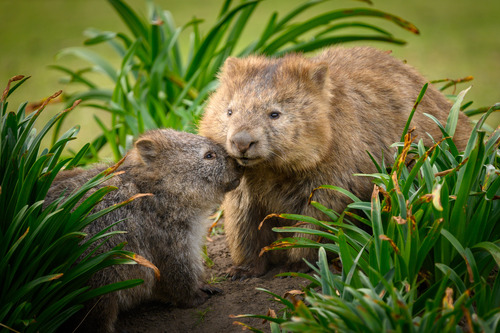
Common Wombat
Meet the Vombatus ursinus, or common wombat, a marsupial with cube-shaped droppings and a knack for burrowing. This nocturnal herbivore, found in Australian forests and grasslands, is vital for soil health and seed spread, making it a unique ecological engineer.
20-26 years
Lifespan
20.0 - 35.0 kg
Weight
Brown, Grey, Tan
Color
25 mph
Top Speed
Least Concern
Conservation Status
Stable
Population Trend
Characteristics
Wombat, native to Australia, known for its burrowing behavior and cube-shaped droppings. It has a sturdy, short-legged body, coarse fur, and lives in eucalyptus forests and grasslands. Nocturnal and herbivorous, it plays a crucial role in aerating soil and seed dispersal.
Distribution Range of the Common Wombat
Vombatus ursinus, commonly known as the common wombat, is native to southeastern Australia, including Tasmania. It is primarily found in the states of New South Wales, Victoria, South Australia, and Tasmania.
Common Wombat's Habitat
Environmental Conditions
The common wombat inhabits temperate forests, alpine woodlands, and coastal areas. It prefers regions with moderate climates, characterized by cool, wet winters and warm, dry summers. These areas typically have well-drained soils suitable for burrowing.
Ecological Niche
The common wombat is a nocturnal, burrowing herbivore that plays an essential role in its ecosystem by aerating the soil through its digging activities. Its diet consists mainly of grasses, roots, and bark, which it grazes upon at night. The wombat's burrowing behavior creates habitats for other species and helps improve soil quality.
Copyright @ Nature Style Limited. All Rights Reserved.
 English
English